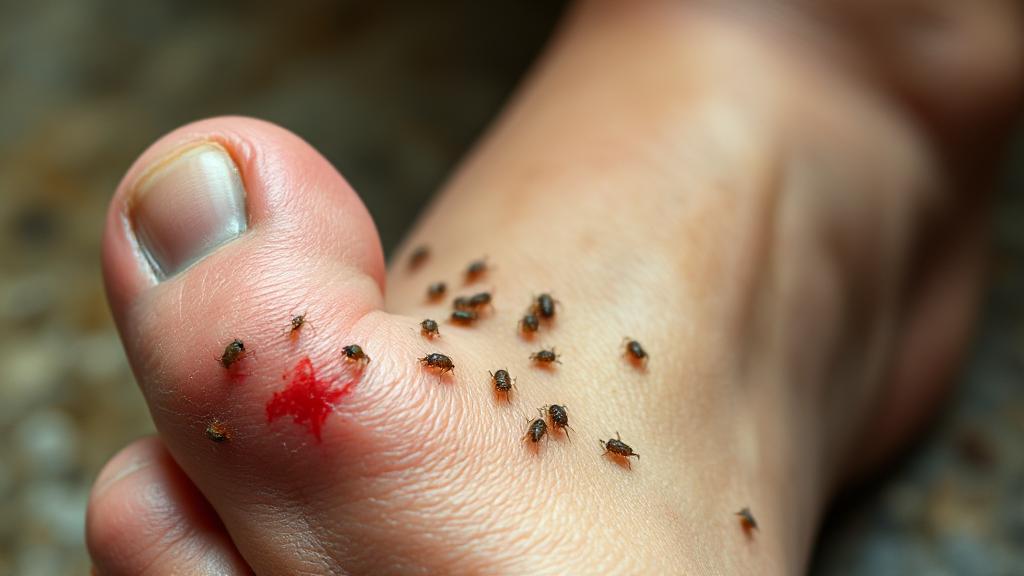What Are Jiggers?
Jiggers, scientifically known as Tunga penetrans or sand fleas, are the smallest known fleas, measuring only about 1 millimeter in length. These parasitic insects burrow into the skin, primarily affecting the feet. They are native to tropical and subtropical regions, particularly in:
- Sub-Saharan Africa
- Caribbean Islands
- Central and South America
- India
Causes and Transmission
Jigger infestations occur when the female flea burrows into the skin to lay eggs. Common causes include:
- Walking Barefoot: In areas where jiggers are prevalent
- Poor Sanitation: Environments with poor hygiene are breeding grounds
- Proximity to Livestock: Jiggers often thrive near animals
- Contaminated Soil: Sandy areas and contaminated environments
The fleas typically target:
- Toes
- Soles of feet
- Heels
- Areas between toes
Symptoms and Signs
Early Stage
- Itching sensation
- Small black dot on the skin
- Mild irritation
- Intense itching and discomfort
Advanced Stage
- Severe pain while walking
- White, pearl-like nodule with a black center
- Ulceration
- Inflammation of surrounding tissue
- Visible lesions with a black dot surrounded by a white circle
Complications
"Secondary bacterial infections, tetanus, and gangrene are potential life-threatening complications of severe jigger infestations." - World Health Organization
If left untreated, complications can include:
- Difficulty walking
- Loss of toenails
- Secondary infections
- Tetanus
- Gangrene
- Social stigma
- Deformities and mobility issues
Treatment Options
Medical Treatment
Additional treatment methods include:
- Manual Extraction: By healthcare professionals using sterilized tools
- Topical Treatments: Antiseptic creams and antibiotics
- Pain Management: Over-the-counter pain relievers
- Soaking: Warm water soaks to loosen the flea and eggs
Prevention Strategies
Preventing jigger infestations involves several key measures:
- Wearing closed shoes
- Regular inspection of feet
- Maintaining good personal hygiene
- Keeping floors clean and dry
- Using insecticide sprays in affected areas
- Applying insect repellents like DEET
- Community education about risks and prevention
Public Health Initiatives
Organizations work to combat jigger infestations through:
- Mass treatment campaigns
- Education programs
- Shoe distribution initiatives
- Environmental improvement projects
For more information about prevention and treatment, visit:
